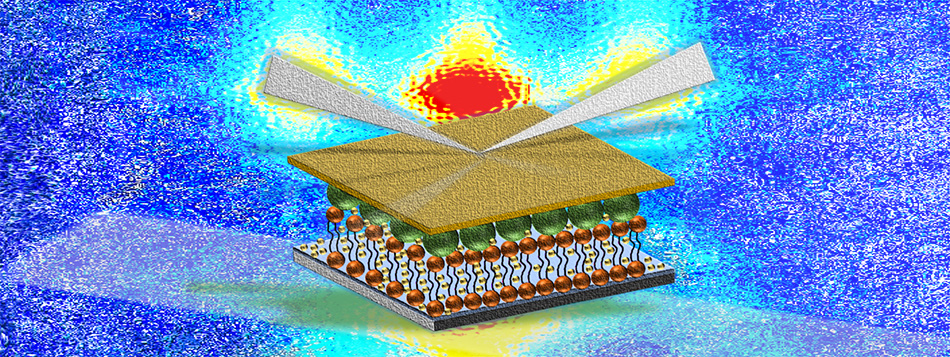Beschreibung
All posters will be hung for the entire duration of the poster session, the specified start and end times for the posters are not to be observed.
The structure and fluctuations of membranes such as phospholipid vesicles or microemulsions is experimentally accessible with small angle neutron and x-ray scattering (SANS and SAXS) and neutron spin echo spectroscopy (NSE). A mathematical model is developed which jointly analyzes SANS, SAXS and NSE data within a single framework. As an example, scattering data from unilamellar vesicles [1]...
Tailoring magnetic nanoparticles (MNPs) involves selecting the right combination of size, shape, and material, which is essential for creating various technological [1], biomedical [2], or environmental applications. To achieve optimal performance in a specific application, it is crucial to understand how the macroscopic characteristics of MNPs and their ensembles are related to their...
Over the past three to four decades, the technique of grazing incidence small-angle scattering has gained widespread acceptance as a means to investigate nanostructures near the surface. While conventional X-ray methods involve directing the beam onto the sample from a vacuum, typically on a wafer, neutron-based approaches allow the beam to penetrate through a silicon wafer, thereby accessing...
Lithium batteries are ubiquitous in our daily lives, finding applications in cell phones, laptop computers, and automobiles. Each of these applications requires specific key features, such as increased capacity, compact size, rapid charging, and cost efficiency. Achieving these objectives involves material research that employs a diverse range of techniques to optimize each battery component,...
Topological magnetic textures, known as magnetic skyrmions, hold significant promise for applications as nanoscale information components in logic and memory devices. These quasiparticles, characterized by their swirling spin configurations, exhibit unique advantages due to their stability, diminutive size, and the low current densities required for manipulation [1]. In transition metal...
Cobalt ferrite (CoFe2O4) nanoparticles have garnered significant attention due to their unique magnetic properties and potential applications in fields ranging from biomedicine to data storage. This study presents a systematic investigation of shape- and size-controlled synthesis of CoFe2O4 nanoparticles, focusing on spherical and cubic morphologies. We employed thermal decomposition method to...
*Poster contribution
Self-assembled nanocrystal crystals of nanoparticles (NPs) offer the opportunity to create devices with collective properties from the individual NP building blocks. Applications in plasmonic, optoelectronic, catalysis, magnetic, phonon, biomedical and electrochemical devices with much improved performance are expected [1,2]. Large area 2D nanocrystals may be prepared by...
Aiming to develop a high-current accelerator-driven neutron source (HiCANS), the High Brilliance Neutron Source (HBS) project has extensively detailed its technical aspects in the conceptual and technical design reports [1][2]. The facility, based on a high-power linear proton accelerator delivering a 70 MeV proton beam with a peak current of 100 mA, is designed to supply three distinct target...
*poster contribution
Port-GISANS will be a module to enable grazing incidence small angle neutron scattering (GISANS) experiments for existing and future small-angle neutron scattering (SANS) instruments by improving flux and signal to noise ratio. This will allow GISANS experiments at ESS from day one on its SANS instruments. By focusing the incident flux on the sample and improving the...
Štefan HRICOV1, Ondrej KAMAN2, Nina-Juliane STEINKE3, Dominika ZÁKUTNÁ1
1Department of Inorganic Chemistry, Faculty of Science, Charles University, Prague, Czechia
2Institute of Physics of the Czech Academy of Sciences, Prague, Czechia
3Institut Laue-Langevin, Grenoble, France
The magnetism exhibited by magnetic nanoparticles (MNPs) is of intense research interest. These nanoscale...
Surface science has developed enormously over the last decades and interfaces play an increasing role in applications as well as many areas of science. This fact is in part related to new instrumental capabilities allowing to extract information with high resolution and sensitivity.
Neutron scattering methods offer unique opportunities, as the neutron is sensitive to light elements, low...
Polarization analysis is a useful tool for probing magnetic order or disorder at interfaces. 3He spin filters are powerful because they can provide the 2D resolutions and high signal to noise needed to study such systems. A high performance in-situ polarized 3He polarization analyzer has been in user operation for over 10 years on MARIA (Magnetism reflectometer). More recently a similar...
Proximity effects (PE) are emergent phenomena that occur at the interfaces of appropriately designed superconductor (SC)/ferromagnet (FM) thin films heterostructures. PE arise due to the strong correlation and electronic competition in the antagonist phase materials. PE have potential applications in spin-triplet Josephson Junctions that involve the manipulation of fluxons, such as...
The addition of synthetic polymers to lipid membranes has emerged as an effective route to modulate their properties and support them in performing biological functions [1]. The presence of polymers in the bilayer can alter the ordering and flip-flop activity of lipids, thus facilitating membrane permeation. In special cases, the addition of selected polymers results in membrane fracturing and...
Almost 4 years into the Covid-19 pandemic, its repercussions go far beyond a simple respiratory infection. A current study estimates that more than 13 % of Covid-19 patients develop Long Covid (LC) with symptoms such as shortness of breath, memory loss and, most prominently, a debilitating, chronic fatigue (CF). Similar post-viral complications (PVC) including CF have also been observed after...

